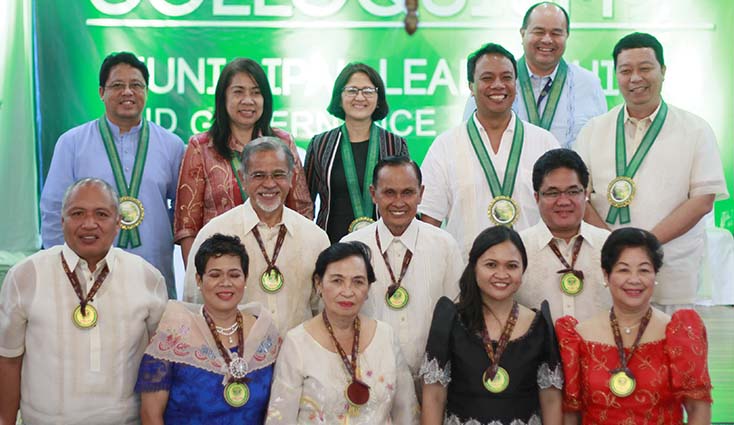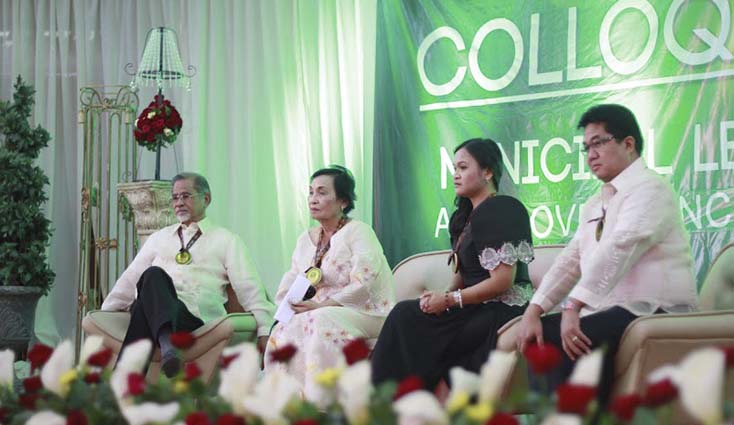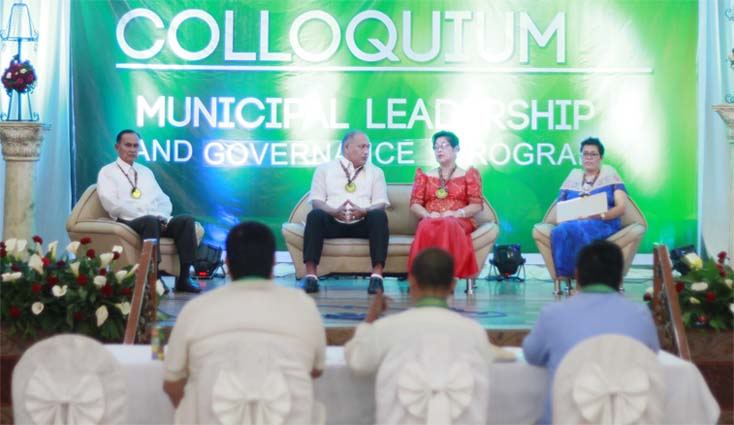Story by Matthan Luceño | Photos by Anthony Jacob Karagdag
“The pillars of health and education make for the kind of governance that will truly spell all the multiplier effects of the other programs of government.”
This was the message of Presidential Adviser for Environmental Protection Neric Acosta during the Municipal Leadership and Governance Program (MLGP) colloquium held at the Pearlmont Hotel.
The colloquium served as graduation of the municipal mayors and municipal health officers (MHOs) in Region 10 who passed the MLGP training and leadership coaching on local health system development.
A component of the Health Leadership and Governance Program of the Department of Health (DOH) and the Zuellig Family Foundation (ZFF), the MLGP is a one-year, two-module program for local chief executives (LCEs) and MHOs who were selected by the DOH.
Xavier University’s Governance and Leadership Institute (GLI) is a certified academic partner of the ZFF in training LCEs and MHOs in Northern Mindanao to become efficient and effective health advocates in their respective municipalities.
“When we have those building blocks of health in our barangays, our households and families, we truly begin in building a nation that is not only healthy but also proud,” emphasized Acosta.
GLI employed the Bridging Leadership Framework in training the LCEs and MHOs. Bridging Leadership is a theory for formulating social objectives and bringing them to fruition. The key to the concept is strengthening the capacity of an individual to move from her personal understanding and ownership of a social issue towards the catalysis of collective resolution.
“Health is a behavioral challenge of our community,” said GLI director Dr Dixon Yasay. “It requires effective leadership from the part of our local government units.”
Bridging Leadership tackles deep-seated social inequities that are too massive to be shouldered by a single sector. The approach relies on the collaborative action of numerous sectors, such as the government, the private sector, civil society, and the church.
“A sustainable structure is possible through the leaders’ commitment and co-creation in the different projects and programs in every municipality,” said newly-appointed DOH Region X director Dr Nimfa Torizzo.
Having undergone the Bridging Leadership training, the LCEs and MHOs are now considered Bridging Leaders whose duty is to connect with and convene fellow stakeholders or “co-owners” to build and foster plans and programs that are guided by the principles of transparency, accountability, participation and resource-sharing.
“In this crusade of local health governance, we are more than happy to have found new allies with the NGOs, the private sector and partner agencies,” shared Hon Diego C Ty, mayor of Plaridel, Misamis Occidental.
“We are also optimistic to have spawned a new breed of health leaders through the youth and children, and of course we are more confident to be reinforced by our equally awakened and enthusiastic barangay leaders and community health leaders,” he continued.
The DOH is committed to implementing a nationwide MLGP through its various Centers for Health Development. The program envisions the improvement of health outcomes through strengthened leadership and governance, reformed local health systems, and increased community participation.
By the end of 2015, the MLGP should have achieved an immediate impact on 609 priority municipalities whose local health systems need a boost in attaining the Millennium Development Goals of reducing infant mortality and improving maternal health.


